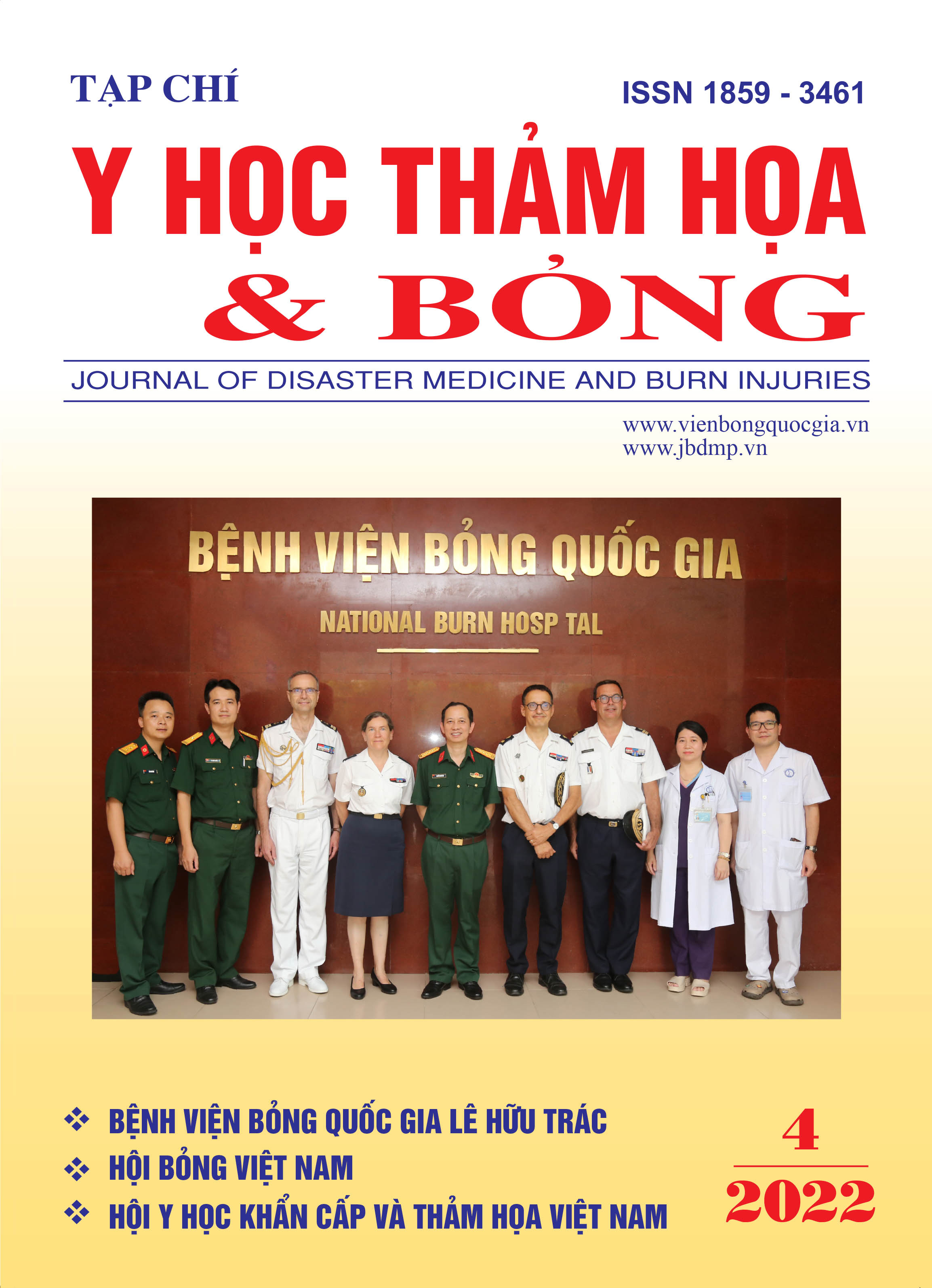Application Bilobed flaps through the scapular artery to treat stretch marks in the armpit areas due to burning sequelae
Main Article Content
Abstract
Aims: Evaluation of the effectiveness of the application of bilobed flaps through the capillary artery in the treatment of stretch marks in the armpit due to burn sequelae.
Materials and methods: Study on 6 patients with axillary traction scars due to burn sequelae who were surgically treated by the use of bilobed flaps through the capillary artery at the Center for Plastic and Reconstructive Surgery, National Burn Hospital. Le Huu Trac from October 2020 to May 2022. The study was designed according to the descriptive clinical research method.
Results: Design flap with longitudinal axis has an average length of 22.43 ± 6.55cm, maximum 30cm; average width is 10.43 ± 3.60cm, maximum 15cm. The result after surgery was 100% live skin flap, there were no cases of complications and complications after surgery. The average ROM before surgery was 62.86º ± 49.65º, the average ROM after surgery was 110.7o ± 33.2o, the average ROM after 3 months was 151.43º ± 30.65º. Early results after surgery: 85.7% good, 14.3% good. Distant results after surgery: 14.3% good, 85.7% good.
Conclusion: Bilobed flaps through the scapular artery in the treatment of stretch marks in the armpit areas of grade III, IV, and V due to burn sequelae achieved good results.
Article Details
Keywords
Bilobed flap through the circumflex scapular artery, bilobed flap
References
2. Đặng Tất Hùng (2001), “Cải tiến phương pháp đo góc trong khám vận động cho bệnh nhân di chứng bỏng”, Tạp chí Y học thảm họa & Bỏng, 2, tr. 91-94.
3. Er E., Uc^ar C. (2005), “Reconstruction of axillary contractures with thoracodorsal perforator island flap”, Burns., 31, pp. 726-730.
4. Murakami M., Hyakusoku H., Ogawa R. (2005), “The multilobed propeller flap method”, Plastic and Reconstructive surgery, pp. 599- 604.
5. Oki K., Hyakusoku H., et al (2005), “Dorsal intercostal perforator (DICP) augmented scapular ‘‘super-thin flaps’’ for the reconstruction of extensive scar contractures in the axilla and anterior chest: a case report”, Burns., 31(1), pp. 105-107.
6. Ono S, Chung K. C., Hyyashi H. (2011), “Application of Multidetector Row Computed Tomography in propeller Flap Planning”, Plast. Reconstr. Surg., 127, pp. 703- 711.
7. Pignatti M., Ogawa R., Hallock G. G. (2008), “Propeller flaps for leg reconstruction”, Journal of Plastic, Reconstructive & Aesthetic Surgery, 61, pp. 777-783.


